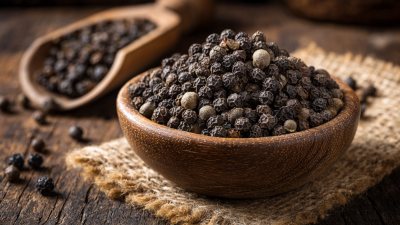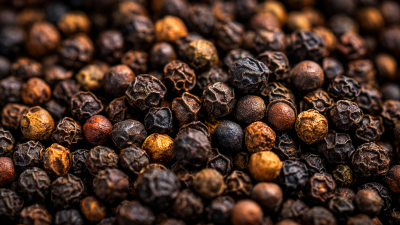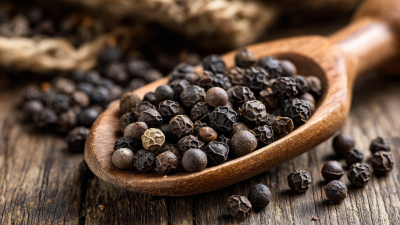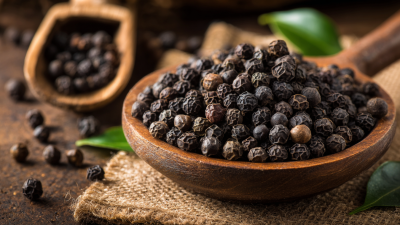Unlocking the Secrets of Best Black Pepper: The Ultimate Guide to Premium Spice Selection and Usage aims to delve into the fascinating world of one of the most commonly used spices in culinary traditions worldwide. Black pepper, often referred to as the "king of spices," is not merely an afterthought on your spice rack, but rather a powerful ingredient with a rich history and numerous benefits.

This ultimate guide will introduce you to the nuances of selecting the Best Black Pepper, exploring the different varieties, origins, and flavor profiles that can elevate your cooking. From understanding the differences between whole and ground pepper to the best methods for storage and usage, this guide will ensure that you make informed choices in your culinary adventures. Whether you are a novice cook or an experienced chef, discovering the secrets behind quality black pepper will enhance your dishes and provide a delightful sensory experience.
When it comes to selecting black pepper, understanding the different grades is essential for elevating your culinary creations. Tellicherry black pepper is one of the most sought-after varieties, known for its complex flavor profile and aromatic richness. Grown in the Malabar region of India, Tellicherry is harvested later than regular black pepper, allowing the berries to reach optimal maturity. This results in a pepper that is bold, fruity, and slightly sweet, making it a favorite among gourmet chefs and home cooks alike.
Another notable variant is Malabar black pepper, which offers a more robust and earthy flavor. Also cultivated in India, Malabar pepper is typically harvested earlier, resulting in a spicier and more pungent taste. The size of Malabar berries can be larger, delivering a strong kick that works well in hearty dishes, particularly in Indian and Southeast Asian cuisines.
Understanding these distinctions not only enhances your spice selection but also allows you to better match the intensity of each pepper to your recipes, bringing out the best in your cooking.
Understanding the aromatic complexity of black pepper involves delving into the science of terpene profiles, which play a crucial role in determining the quality and flavor of the spice. Terpenes are organic compounds that contribute to both aroma and taste, influencing consumer preferences and culinary applications. Research indicates that specific terpene combinations, such as myrcene, limonene, and caryophyllene, can enhance the sensory experience of black pepper, potentially making it a favorite in both the kitchen and wellness products. A detailed analysis shows that these compounds are not only responsible for the signature scent but also affect the overall potency and effectiveness in various applications.
In the ever-evolving spice market, the emphasis on quality and gourmet attributes has risen significantly. For instance, recent studies have highlighted how premium spices with rich terpene profiles, like black pepper, are being sought after for their potential health benefits, including anti-inflammatory properties and digestive support. With consumers more informed than ever, understanding the nuances of these aromatic compounds can lead to more satisfying choices in both food and wellness. As the spice industry continues to innovate, those who unlock the secrets of aroma will undoubtedly lead the way in enhancing gastronomic experiences and health benefits alike.
This chart displays the quality comparison of various black pepper sources based on terpene profiles. The data highlights how different types of black pepper vary in terms of key aroma compounds, which directly influence their flavor and overall quality.
Black pepper, often referred to as the "king of spices," is more than just a flavorful addition to our meals; it boasts a range of health benefits primarily attributed to piperine, its active compound. Research indicates that piperine has significant anti-inflammatory properties, similar to those of certain prescription medications, especially when combined with other spices like turmeric and ginger. This synergy can help manage conditions such as knee inflammation, making black pepper an essential component of health-conscious diets.
In addition to its anti-inflammatory effects, black pepper may assist in regulating blood sugar levels, thereby offering potential benefits for individuals with diabetes. A report from the Journal of Agricultural and Food Chemistry highlighted that daily consumption of black pepper could improve insulin sensitivity, which is vital for maintaining healthy blood sugar levels. Moreover, as we learn more about the spice's capabilities, it becomes evident that integrating black pepper into our daily meals can be a delicious approach to enhancing both flavor and health.

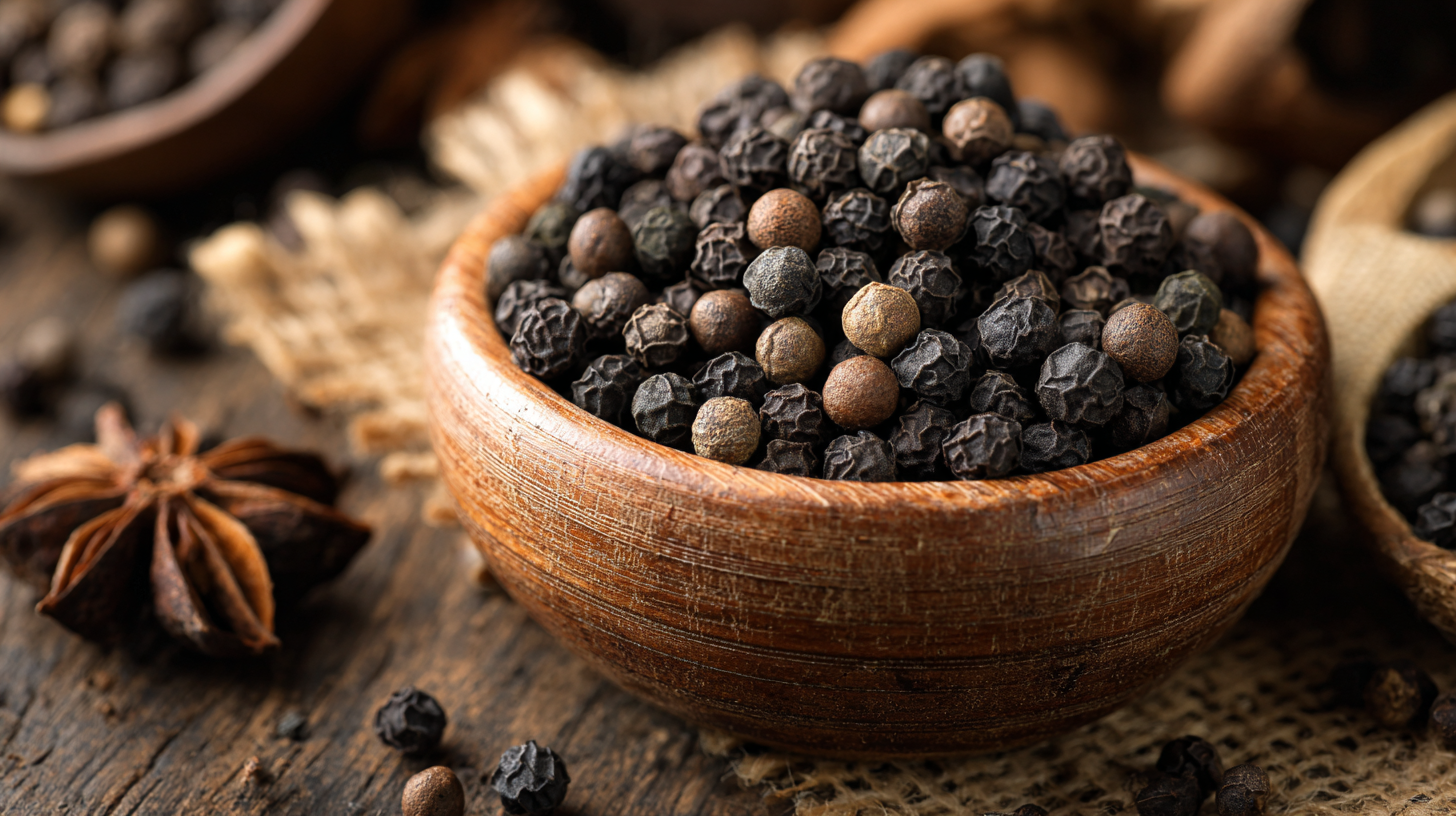 When selecting black pepper, sustainability is a crucial factor to consider. The spice market has seen a shift towards ethical sourcing, with a growing demand for responsibly produced pepper. According to the International Pepper Community, sustainable sourcing not only supports local farmers but also ensures the longevity of pepper production. It is estimated that around 80% of black pepper comes from smallholder farms, which makes their farming practices pivotal for the environment and economy. Choosing sustainably sourced black pepper helps protect biodiversity and encourages better agricultural practices.
When selecting black pepper, sustainability is a crucial factor to consider. The spice market has seen a shift towards ethical sourcing, with a growing demand for responsibly produced pepper. According to the International Pepper Community, sustainable sourcing not only supports local farmers but also ensures the longevity of pepper production. It is estimated that around 80% of black pepper comes from smallholder farms, which makes their farming practices pivotal for the environment and economy. Choosing sustainably sourced black pepper helps protect biodiversity and encourages better agricultural practices.
Tips: Look for certifications such as Fair Trade or Rainforest Alliance when purchasing black pepper. These labels indicate that the pepper has been produced in a manner that respects both the environment and the farmers’ rights.
Additionally, educate yourself on the origin of the pepper. Regions like India, Brazil, and Vietnam are major suppliers, but the methods used can vary significantly. According to a 2021 report by Statista, the global black pepper market is projected to reach $3 billion by 2025, highlighting the importance of making responsible choices as consumers. Opting for organic and fair-trade options contributes to sustainable farming practices, ensuring that black pepper can be enjoyed by future generations.
When it comes to enhancing the culinary experience, black pepper stands out as a versatile spice that elevates flavors in various dishes. To maximize its spiciness, cooking techniques play a crucial role. One effective method is to freshly grind whole peppercorns just before use. This preserves the essential oils, ensuring that you enjoy the full spectrum of its heat and aroma. Consider using a pepper mill to achieve a finer or coarser grind depending on your dish; the fresher the grind, the more intense the flavor.
Another tip is to add black pepper at the right moments during cooking. For dishes that require longer cooking times, such as stews or braises, try incorporating the pepper early on to allow its flavor to develop. On the other hand, for stir-fries or salads, adding freshly ground pepper just before serving can give your dish a vibrant, sharp finish, enhancing its overall taste.
Finally, consider pairing black pepper with complementary ingredients to amplify its heat. For instance, combining it with citrus zest or acidic elements like vinegar can highlight its spiciness and create a well-rounded flavor profile. Experimenting with various combinations will unlock new dimensions of flavor in your culinary creations.
| Spice Type | Origin | Flavor Profile | Best Cooking Method | Recommended Pairings |
|---|---|---|---|---|
| Black Peppercorns | Vietnam | Pungent, Spicy, Earthy | Freshly Cracked | Meats, Vegetables |
| Tellicherry Pepper | India | Fruity, Complex | Whole in Marinades | Seafood, Pasta |
| White Pepper | Indonesia | Earthy, Musty | Added During Cooking | Soups, Cream Sauces |
| Kampot Pepper | Cambodia | Floral, Citrus Notes | Lightly Toasted | Eggs, Cheese |
| Green Peppercorns | Madagascar | Bright, Mild | Pickled or Fresh | Salads, Dressings |

